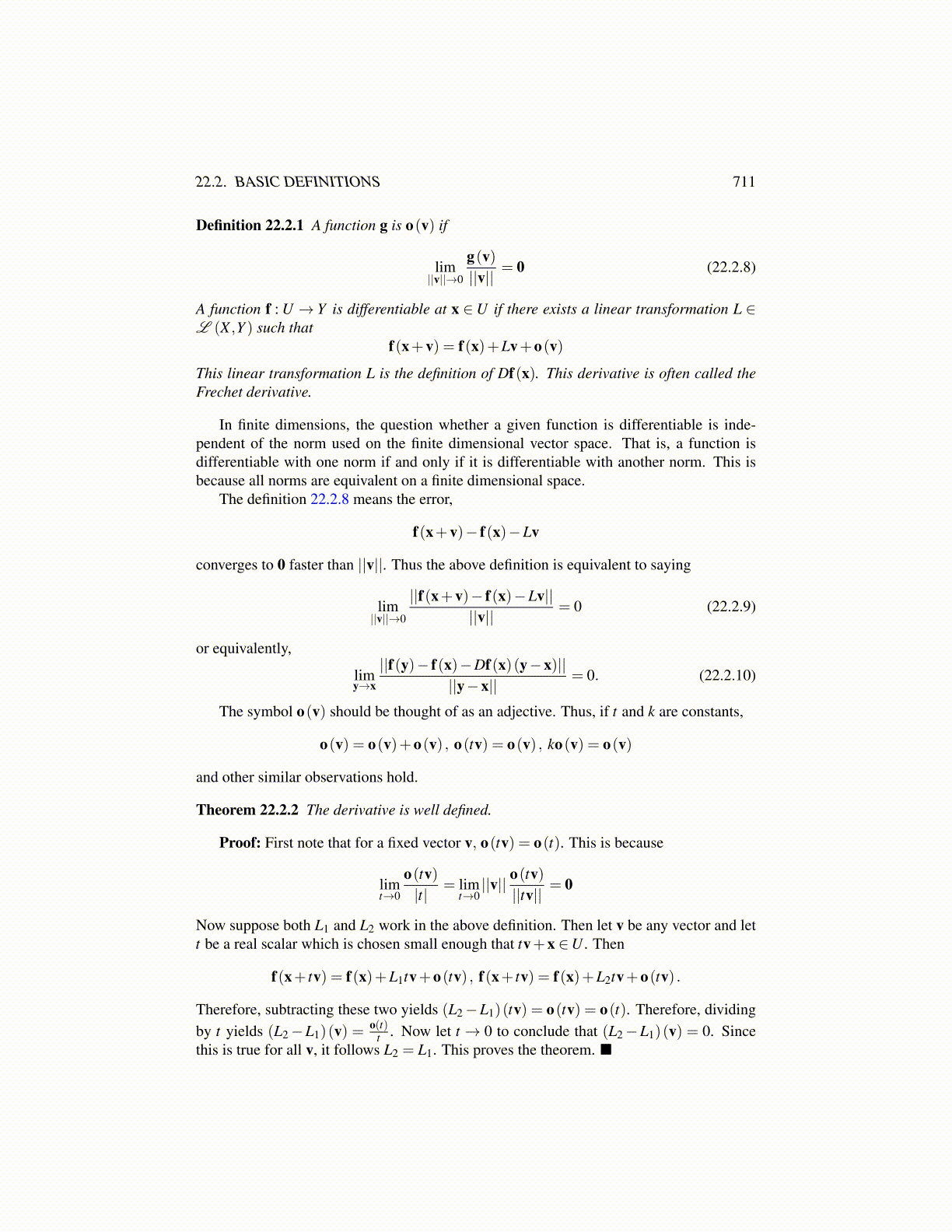
22.2. BASIC DEFINITIONS 711
Definition 22.2.1 A function g is o(v) if
lim||v||→0
g(v)||v||
= 0 (22.2.8)
A function f : U → Y is differentiable at x ∈U if there exists a linear transformation L ∈L (X ,Y ) such that
f(x+v) = f(x)+Lv+o(v)
This linear transformation L is the definition of Df(x). This derivative is often called theFrechet derivative.
In finite dimensions, the question whether a given function is differentiable is inde-pendent of the norm used on the finite dimensional vector space. That is, a function isdifferentiable with one norm if and only if it is differentiable with another norm. This isbecause all norms are equivalent on a finite dimensional space.
The definition 22.2.8 means the error,
f(x+v)− f(x)−Lv
converges to 0 faster than ||v||. Thus the above definition is equivalent to saying
lim||v||→0
||f(x+v)− f(x)−Lv||||v||
= 0 (22.2.9)
or equivalently,
limy→x
||f(y)− f(x)−Df(x)(y−x)||||y−x||
= 0. (22.2.10)
The symbol o(v) should be thought of as an adjective. Thus, if t and k are constants,
o(v) = o(v)+o(v) , o(tv) = o(v) , ko(v) = o(v)
and other similar observations hold.
Theorem 22.2.2 The derivative is well defined.
Proof: First note that for a fixed vector v, o(tv) = o(t). This is because
limt→0
o(tv)|t|
= limt→0||v|| o(tv)||tv||
= 0
Now suppose both L1 and L2 work in the above definition. Then let v be any vector and lett be a real scalar which is chosen small enough that tv+x ∈U . Then
f(x+ tv) = f(x)+L1tv+o(tv) , f(x+ tv) = f(x)+L2tv+o(tv) .
Therefore, subtracting these two yields (L2−L1)(tv) = o(tv) = o(t). Therefore, dividingby t yields (L2−L1)(v) = o(t)
t . Now let t → 0 to conclude that (L2−L1)(v) = 0. Sincethis is true for all v, it follows L2 = L1. This proves the theorem.